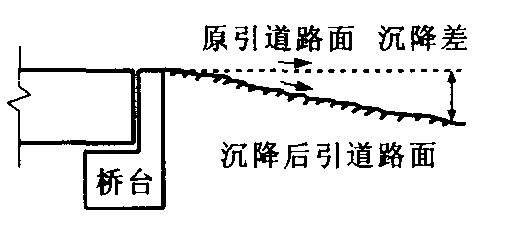Theoretical models of determining tolerable differential settlement at end of bridge
-
摘要: 为确定路桥过渡段桥台与引道之间的差异沉降, 考虑行车的舒适性和安全性, 以人的振动频率和加速度最大瞬态振动值作为控制指标, 建立了台阶状和折线形不设搭板与设搭板的路桥过渡段模型, 提出以容许台阶高度和搭板容许纵坡变化值作为不设搭板与设搭板的路桥过渡段容许差异沉降, 以三自由度体系作为单轮平整度测定车模型, 以五自由度体系作为双轴车辆模型, 而且五自由度体系中不能忽略车架的转动惯量。容许最大瞬态振动值为1.0 m/s2时, 搭板容许纵坡变化计算值为0.42%, 位于行车调查得到的0.4%~0.5%范围内, 表明本文建立的模型是合理的。Abstract: In order to determine the tolerable differential settlement between bridge abutment and approach embankment, taking into account the comfort and safety of riders, the paper put forward the riders' vibration frequency and maximum transient vibration value of acceleration as controlling indices, built-broken lines models and step models for bridge approaches with and without approach slabs respectively, suggested the tolerable differential movement of embankment/structure interface and the tolerable differential slope of approach slab as the tolerable differential settlements, selected three freedom degrees system and five freedom degrees system as the models for the roughness testing vehicle with only one wheel and the vehicle with two axles respectively, and emphasized that the inertia moment of vehicle body in five freedom degrees system couldn't be ignored. The allowable differential slope of approach slab [Δi] is (0.4%) to 0.5%. When the tolerable maximum transient vibration value was 1.0 m/s2, [Δi] is 0.42%. The result indicates that the models are reasonable.
-
表 1 车辆模型对不设搭板时计算结果的影响
Table 1. Influence of vehicle models when without approach slab
车辆模型 转动惯量/(kg·m2) 振动频率/Hz 最大瞬态振动值/(m·s-2) 路对车的作用力/kN 最大值 最小值 五自由度体系 0 5.55 0.61 74.69 34.03 1 000 4.55 0.46 75.28 35.14 37 342 1.39 0.35 72.10 34.72 三自由度体系 — 1.47 0.56 45.95 34.84 表 2 车辆模型对设搭板的路桥过渡段计算结果的影响
Table 2. Influences of vehicle models when with approach slab
车辆模型 转动惯量/(kg·m2) 振动频率/Hz 最大瞬态振动值/(m·s-2) 路对车的作用力/kN 最大值 最小值 五自由度体系 0 1.16 0.61 63.89 31.90 1 000 1.04 0.55 64.17 32.01 37 342 1.35 1.20 60.57 25.27 三自由度体系 — 1.47 1.94 48.49 27.35 -
[1] 日本道路协会. 道路土工软土地基处理技术指南[M]. 北京: 人民交通出版社, 1984. [2] 叶见曙. 桥头引道工后沉降控制标准的研究[J]. 东南大学学报, 1997, 27(3): 12 -17. https://www.cnki.com.cn/Article/CJFDTOTAL-DNDX703.002.htmYE Jian-shu. Controlling criterion of bridge approach remaining settlement[J]. Journal of Southeast University, 1997, 27(3): 12-17. (in Chinese) https://www.cnki.com.cn/Article/CJFDTOTAL-DNDX703.002.htm [3] Wahls H E. NCHRP synthesis of highway practice 159: design and construction of bridge approaches[R]. Transportaion Research Board, National Research Council, Washington, D.C., 1990. [4] 赖国麟. 关于桥头搭板沉降坡差容许值的建议[R]. 南京: 东南大学, 1994. [5] 张洪亮, 胡长顺. 路桥过渡段桥头搭板容许坡差确定的参数影响[J]. 长安大学学报(自然科学版), 2003, 23(3): 11-14. https://www.cnki.com.cn/Article/CJFDTOTAL-XAGL200303002.htmZHANG Hong-liang, HU Chang-shun. Paremeters's influence on determination of allowable differential slope of approach slab[J]. Journal of Chang'an University(Natural Science Edition), 2003, 23(3): 11-14. (in Chinese) https://www.cnki.com.cn/Article/CJFDTOTAL-XAGL200303002.htm [6] Thiele J, Maher K T, Joseph V B. State of the art for control of bridge approach settlement[A]. Bridge Evaluation Repair and Rehabilitation[C]. USA. Kluwer Academic Publishers, 1990. [7] 钟阳, 刘季. 路面车辆随机动荷载理论分析[J]. 工程力学, 1993, 10(4): 26-31. https://www.cnki.com.cn/Article/CJFDTOTAL-GCLX199304003.htmZHONG Yang, LIU Ji. Theoretical analysis of random dynamic load between road and vehicle[J]. Engineering Mechanics, 1993, 10(4): 26-31. (in Chinese) https://www.cnki.com.cn/Article/CJFDTOTAL-GCLX199304003.htm [8] 冯忠居, 方贻立, 龚坚城, 等. 高等级公路桥头跳车的危害及其机理的分析[J]. 西安公路交通大学学报, 1999, 19(4): 33-35. https://www.cnki.com.cn/Article/CJFDTOTAL-XAGL199904008.htmFENG Zhong-ju, FANG Yi-li, GONG Jian-cheng, et al. Analysis of the harmful effect of vehicle bump at bridge-head of the highway and its mechanism[J]. Journal of Xi'an Highway University, 1999, 19(4): 33-35. (in Chinese) https://www.cnki.com.cn/Article/CJFDTOTAL-XAGL199904008.htm [9] 蔡成标, 翟婉明, 赵铁军. 列车通过路桥过渡段时的动力作用研究[J]. 交通运输工程学报, 2001, 1(1): 17-19. http://transport.chd.edu.cn/article/id/200101004CAI Cheng-biao, ZHAI Wan-ming, ZHAO Tie-jun. Research on dynamic interaction of train and track on roadbed-bridge transition section[J]. Journal of Traffic and Transportation Engineering, 2001, 1(1): 17-19. (in Chinese) http://transport.chd.edu.cn/article/id/200101004 -





 下载:
下载:








